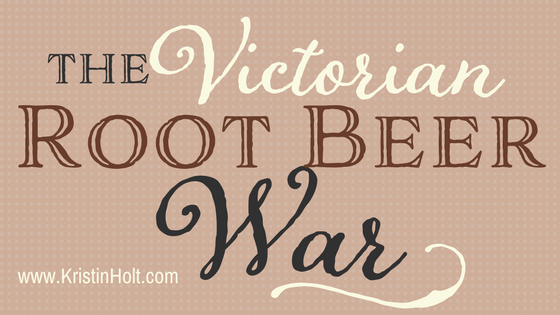
by Kristin Holt | Jul 27, 2017 | Articles
Hires Root Beer, from its debut in the mid-1870s, was sold as a refreshing beverage (with no medicinal expectations). The name, chosen by Charles H. Hires, to appeal to tough coal miners, who’d never find “root tea” attractive, ended up causing Hires Co. a bit of trouble with Women’s Christian Temperance Union (WCTU). Who knew that “beer” in a name, and the common knowledge that root beer extract was percolated with alcohol (though the finished drink had no more than a whole loaf of homemade bread), to cause banning of the beverage?

by Kristin Holt | Jun 26, 2017 | Articles
Behind the 19th century soda fountain counter, “baristas” known as Dispensers or Soda Men, knew a tremendous amount about customer service, the making of an ever-growing list of beverages, and the care and use of operating the soda apparatus. While other trained men mixed syrups, compounded recipes for everything from soda water to flavorings to syrups, and cleaned and repaired the machines, this article focuses on the Soda Men and their key role in the success of a Victorian-American Soda Fountain. This post is filled with primary-source recipes, tips for excellent customer service, and instructions to properly pour a soda water or ice cream soda.

by Kristin Holt | Oct 19, 2015 | Articles
At the Centennial Exhibition in Philadelphia, Pennsylvania, Charles Louis Fleishmann offered pieces of freshly baked bread made with the world’s very first commercially prepared yeast from an exhibit modeled after a Vienna Bakery. An increase demand for Fleischmann’s yeast soon followed, bringing about the building of Fleischmann plants in New York. In this article, I share five key concepts about 19th century bread baking that stood out as surprising key concepts–and I’m a bread baker…so finding myself caught off guard by such research was really something.











